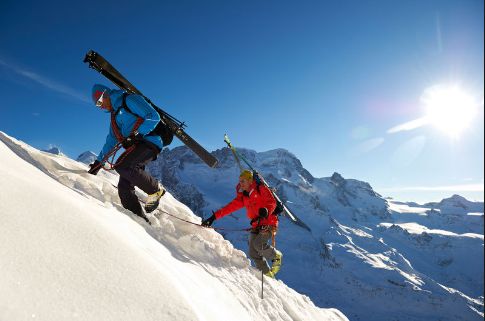Zermatt is absolutely one of the most beautiful resorts for skiing and hiking. But since many areas such as ski pistes and gondolas are at high places, visitors must be careful for altitude sickness. The symptoms are written in the other article “What is altitude sickness”. But if you missed it, here is the basic definition. High altitude sickness occurs when there is not enough oxygen. High up in the mountains, oxygen levels are low and due to that, visitors can have symptoms such as headache, dizziness, appetite loss and loss of sleep. Some people can have these mild symptoms just by riding a train that leads up high in the mountains but while hiking or mountaineering, altitude sickness can be deadly. To enjoy your vacation fully at Zermatt, it may be wise to know some tips to prevent altitude sickness.
Drink plenty of water. What you might think is altitude sickness might actually be dehydration, caused by the higher rate of water vapor lost from the lungs at higher altitudes. If you have a headache, drink one liter of fluid, and take some Tylenol. While up high in the mountain, since there is snow, people feel that they do not sweat and do not need to hydrate as much. But since the air is thin and dry up in the mountains, just by breathing, people can get dehydrated. Try to stick with water or liquids that replace electrolytes. Avoid sugary or caffeinated beverages such as sodas. These liquids act as diuretics and can dehydrate you even more.
Eat right. You can stop at many restaurants at Zermatt and eat right. A meal high in carbohydrates will improve your body’s ability to absorb oxygen, and will give you the energy needed to adjust to the elevation. You should avoid salty foods since the sodium will increase your blood pressure, which can exacerbate the symptoms of altitude sickness. Just be sure to have some food in your body for energy.
Follow the “golden rule” of climb high and sleep low. Once you have made your way up past 3000 meters or 10,000 feet, do not ascend more than 300 meters or 1000 feet per day to sleep. You can climb as high as you want, just make sure that you come back to base camp that is no more than 300 meters or 1000 feet higher than your previous night’s sleeping elevation. This is a useful guideline to keep in mind if you are driving to a high altitude. Sleeping at a lower altitude makes it easier to adjust to high altitude. You will feel better and have more energy after a good night’s sleep in a lodge or at a lower elevation. So if you are planning to go up a high mountain and have to stay over night at a mountain hut around Zermatt, be sure to check their elevation height.

